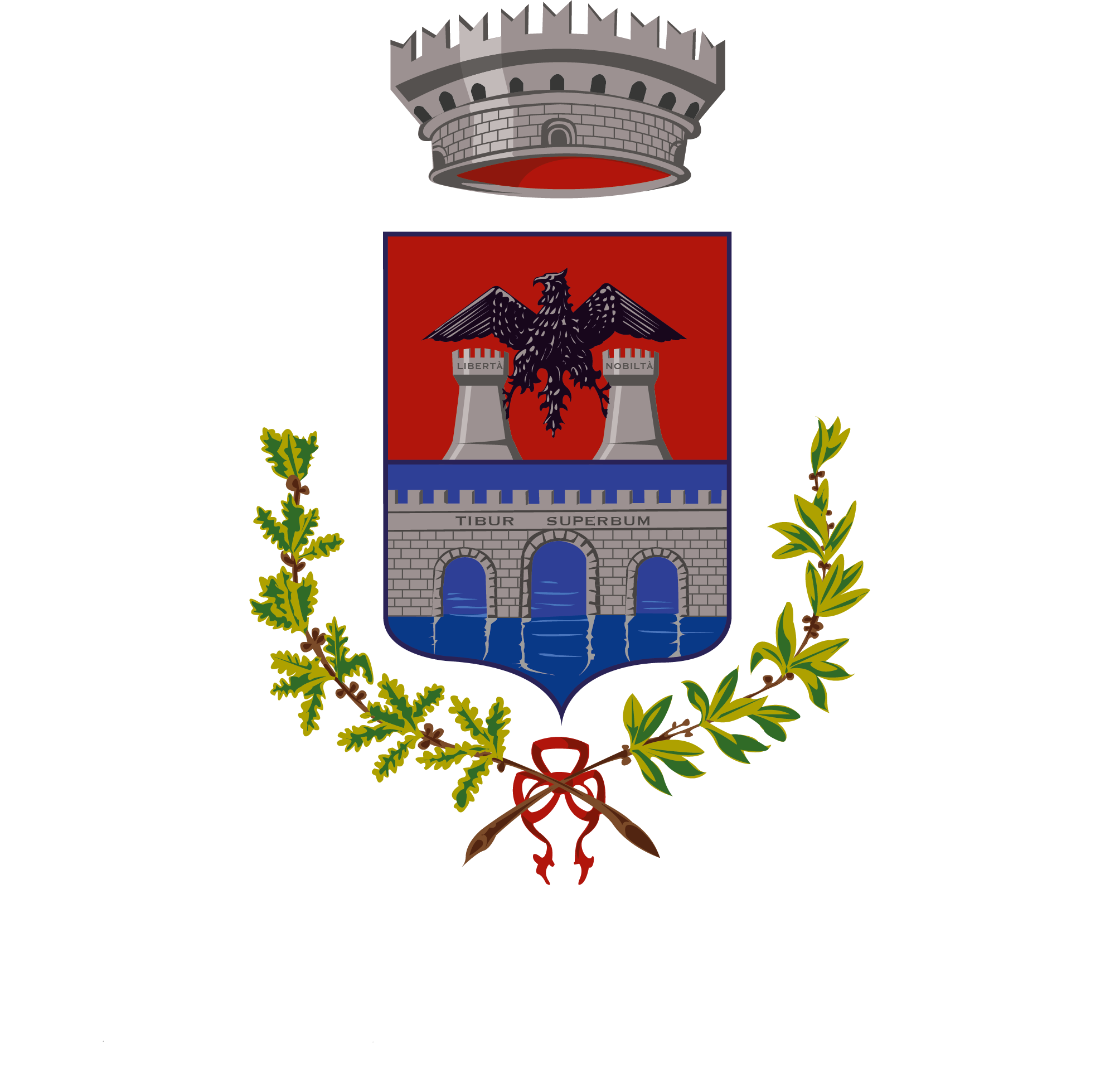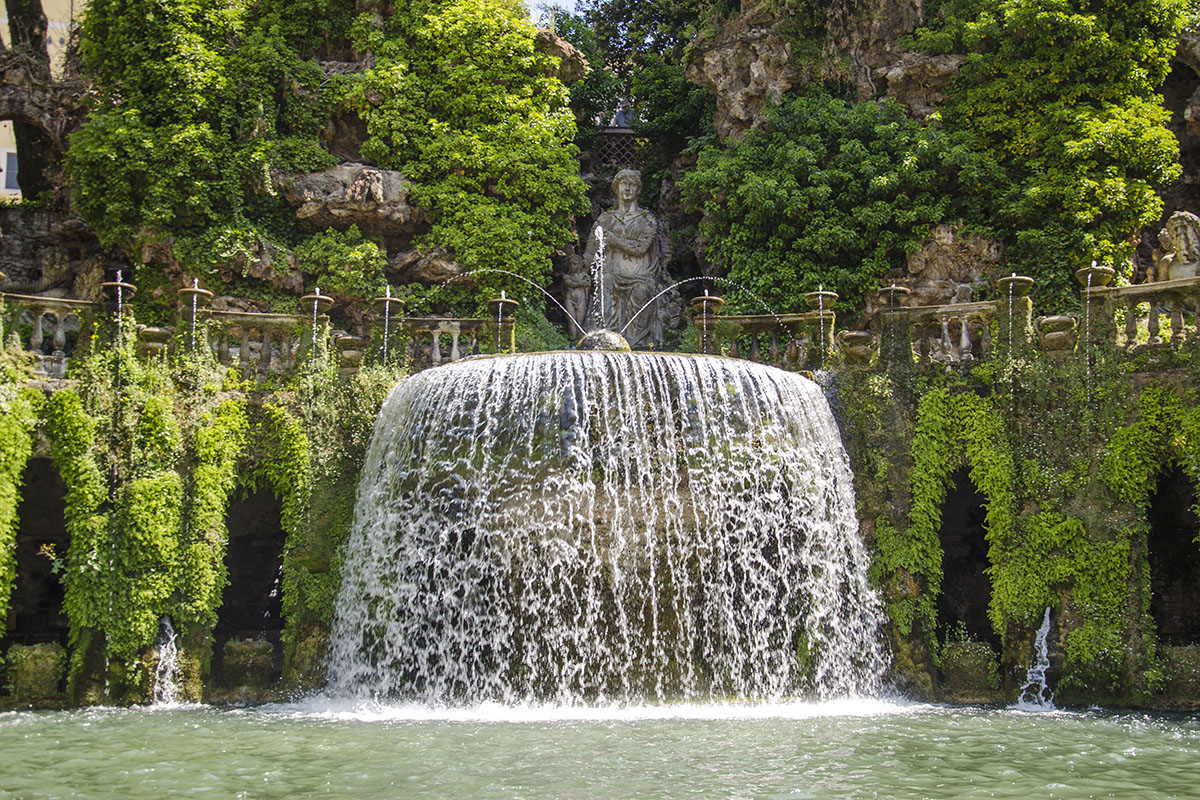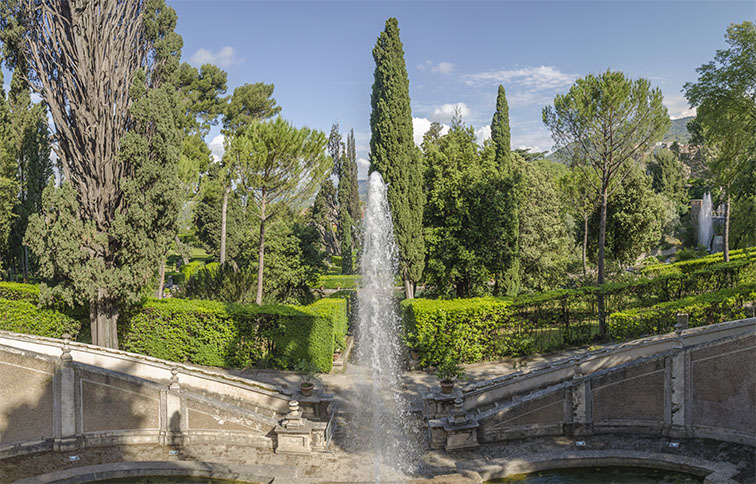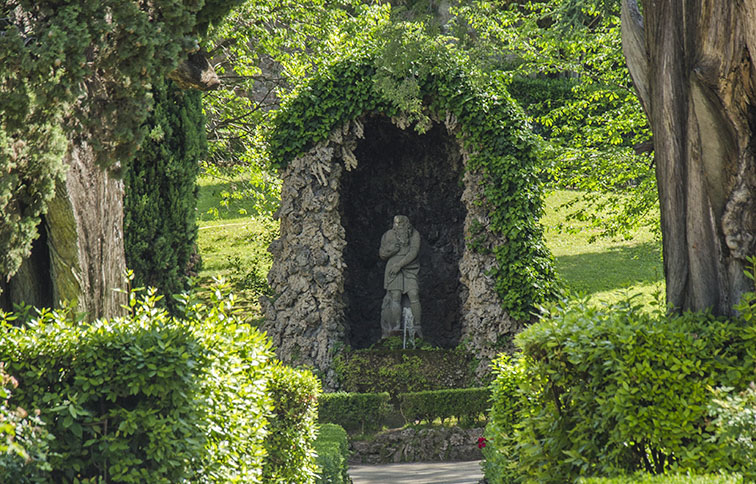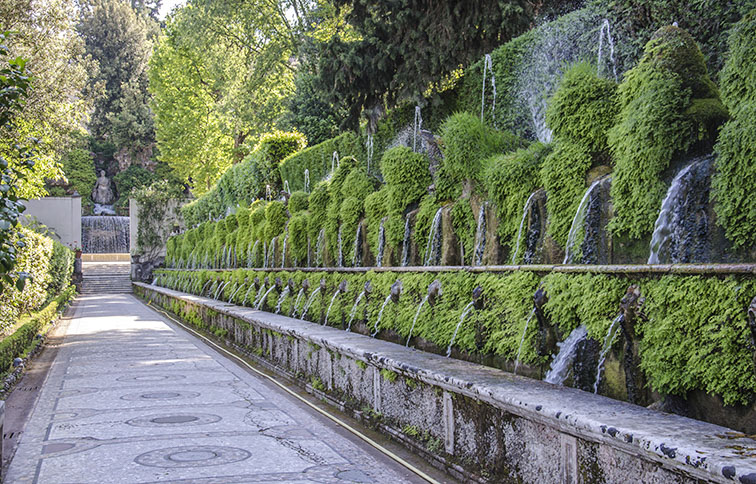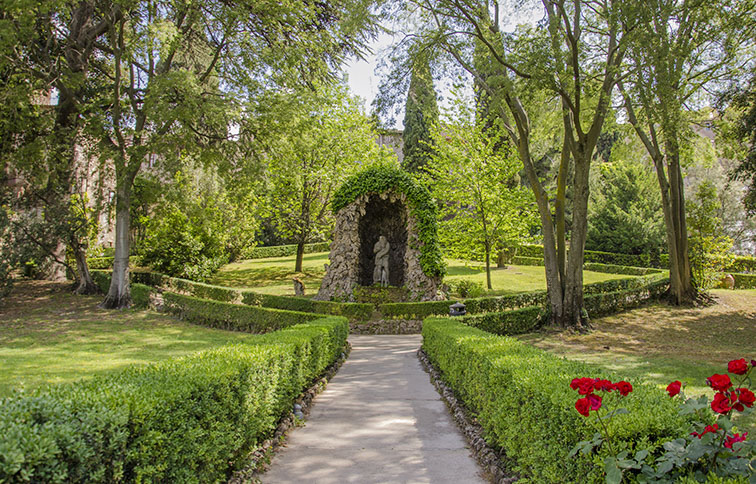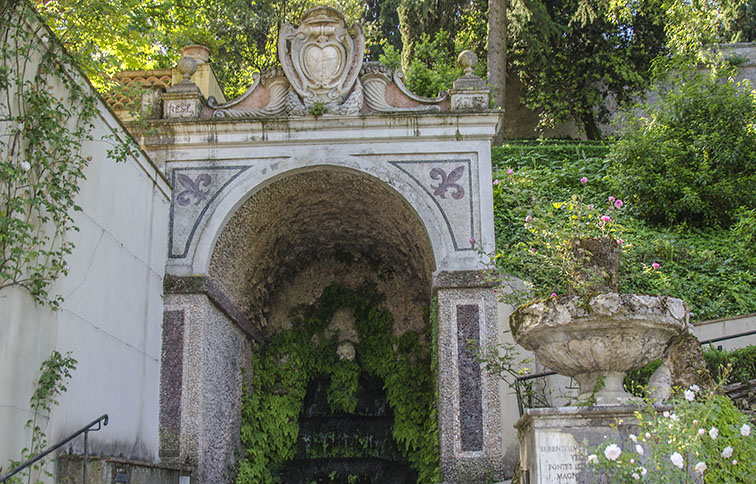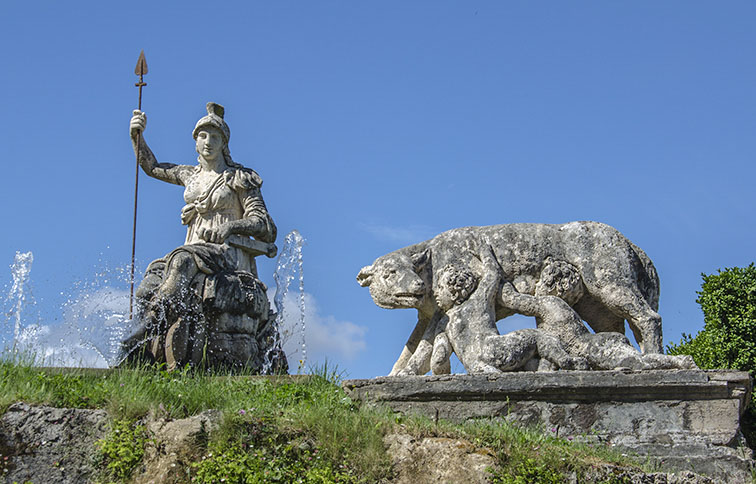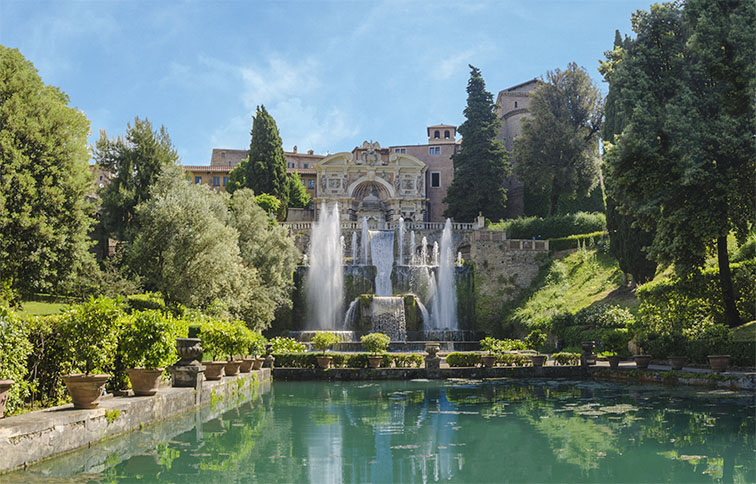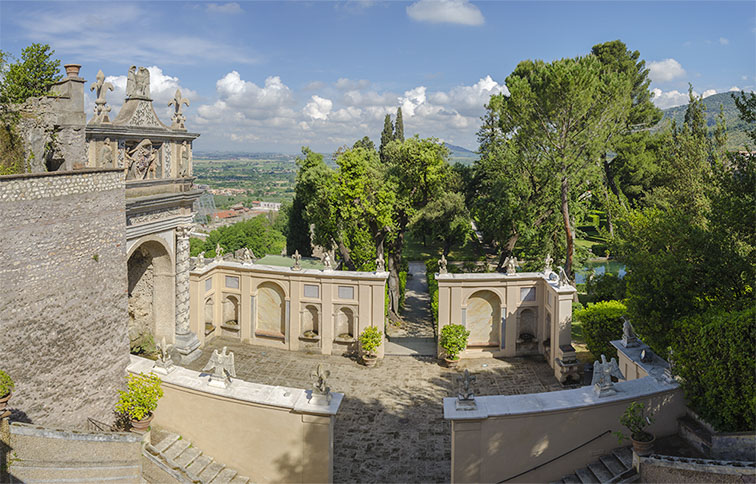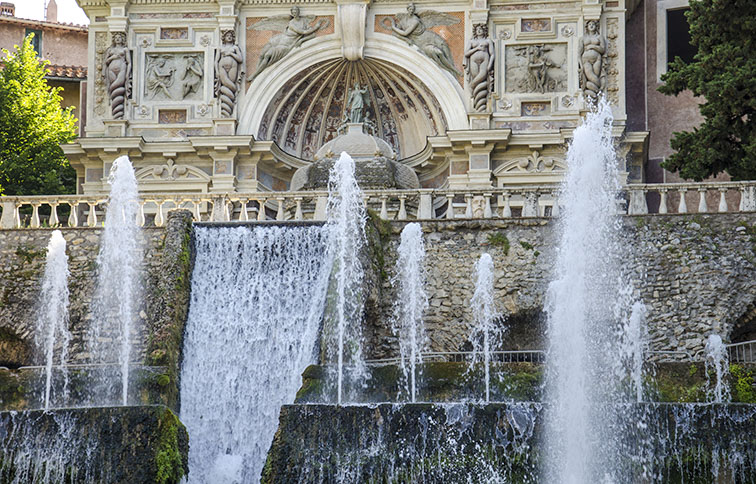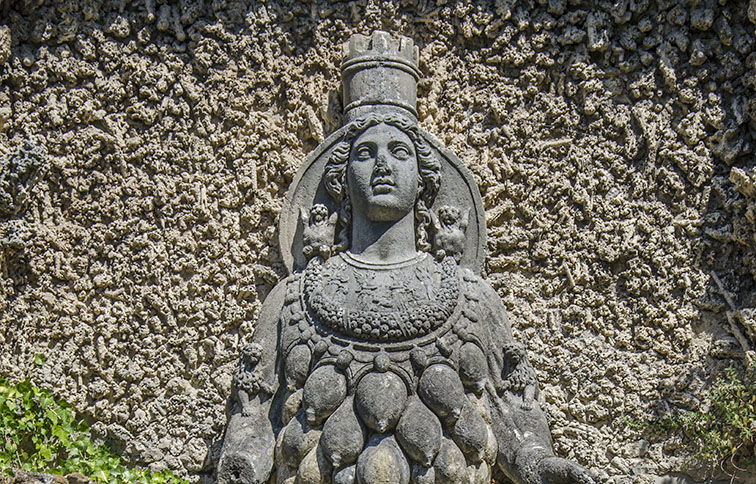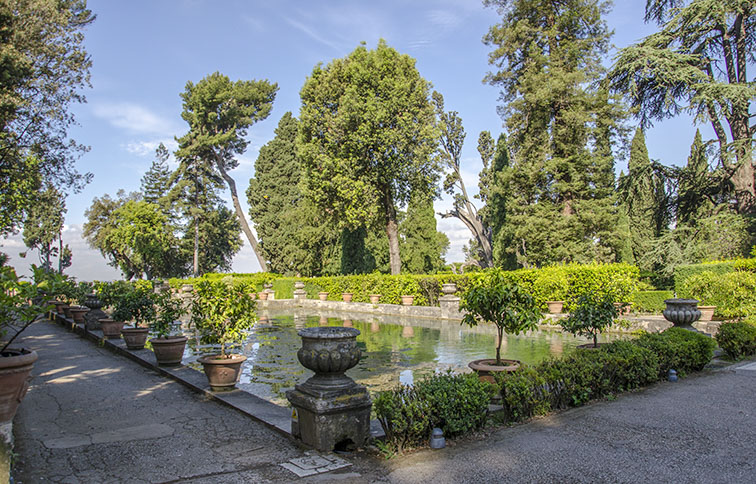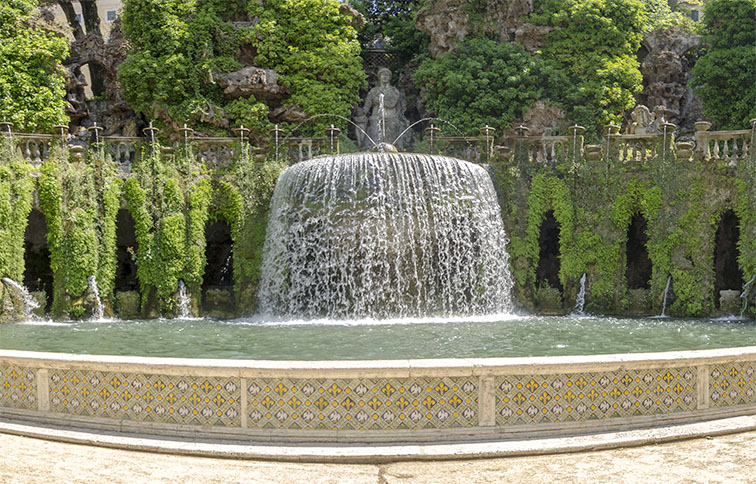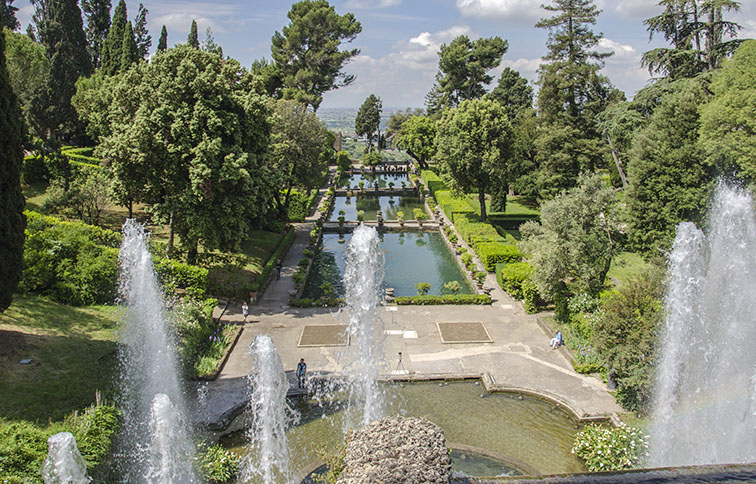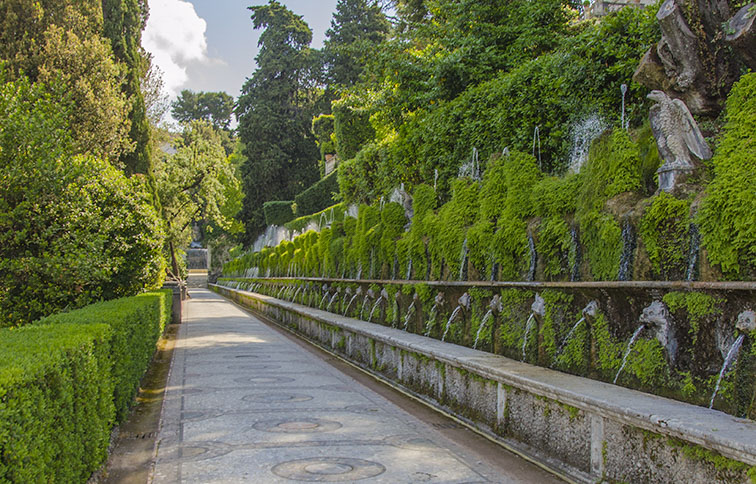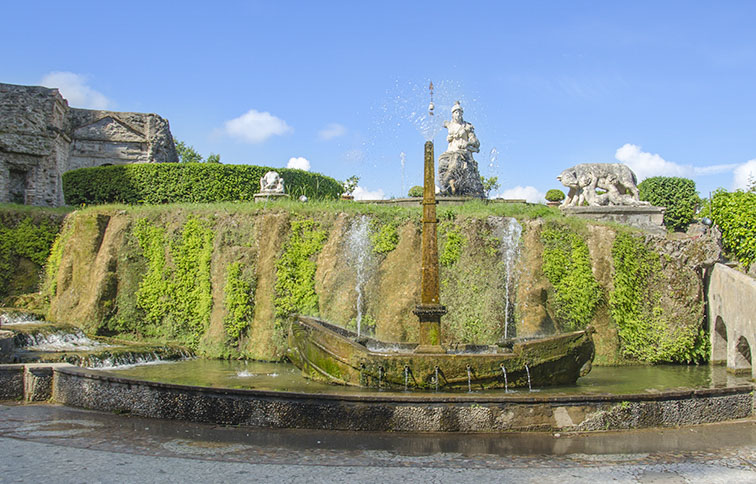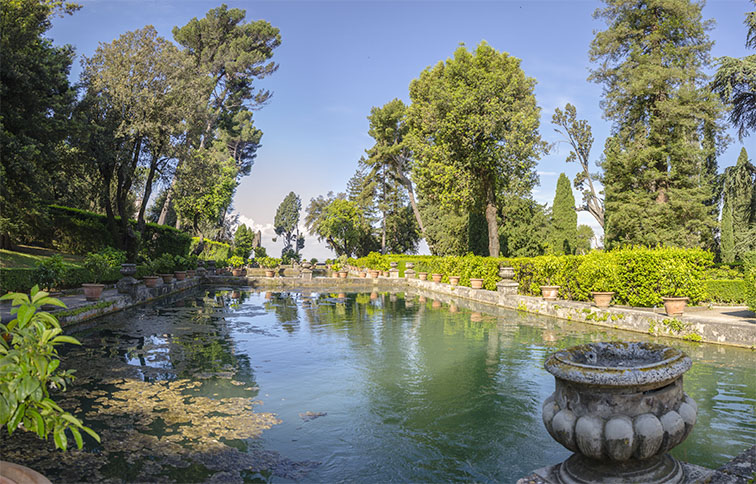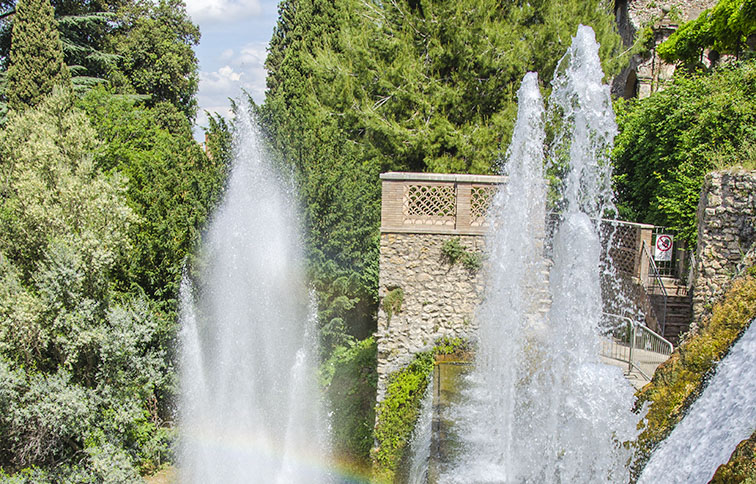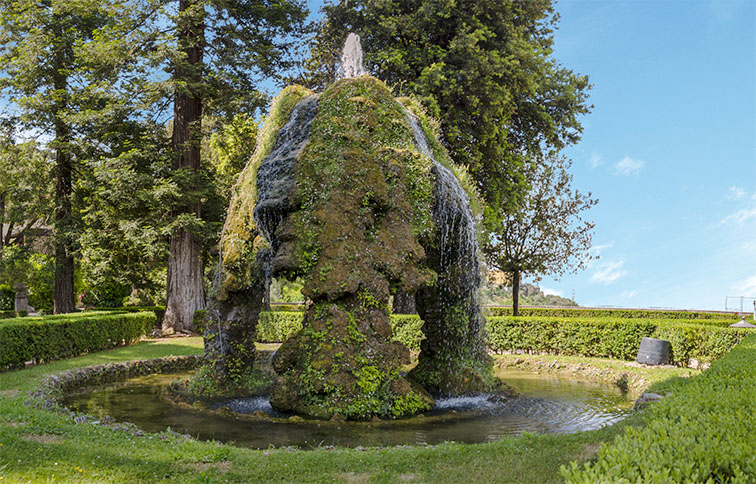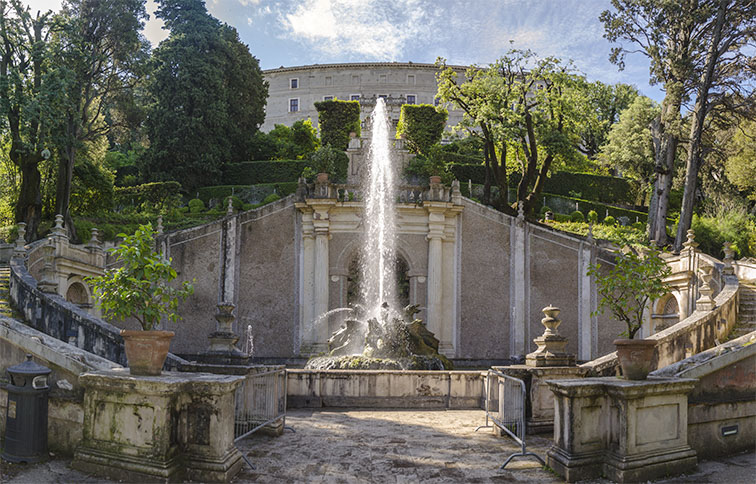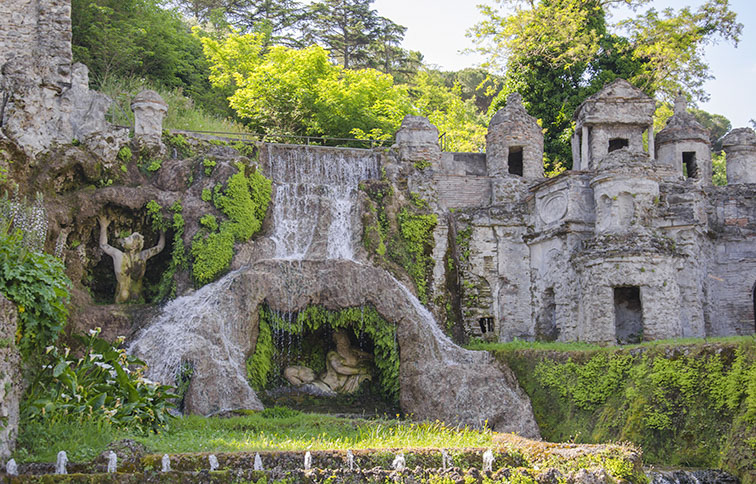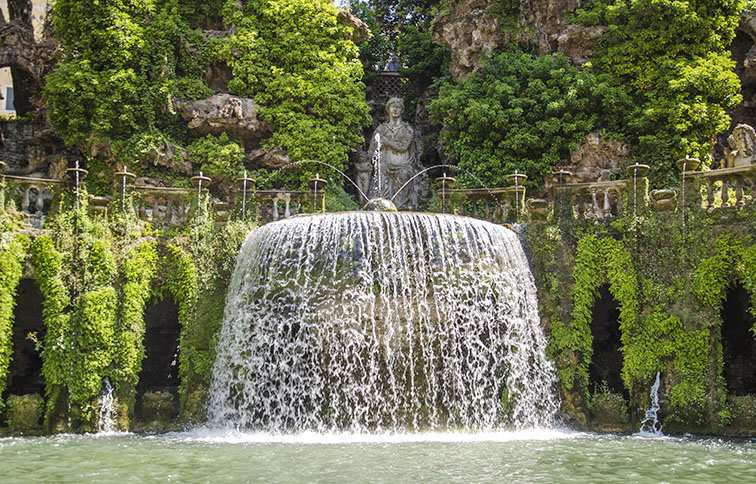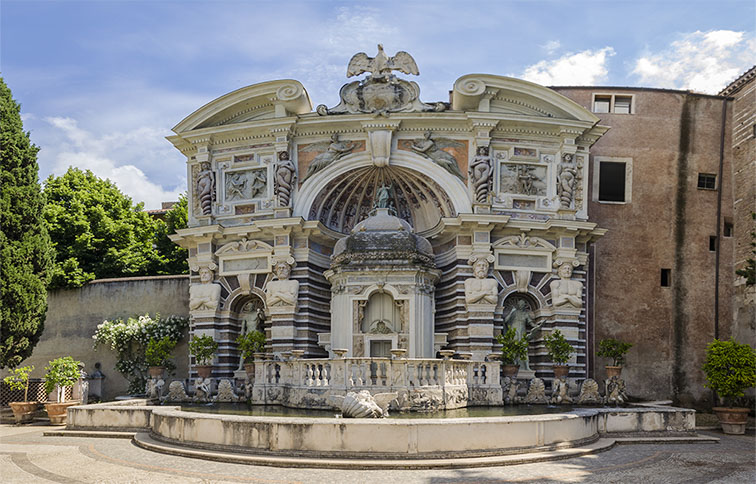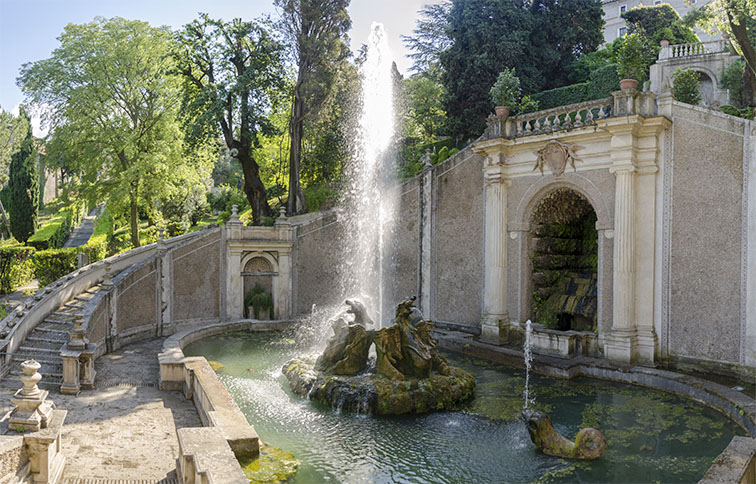Villa d'Este
Situated in Tivoli, near Rome, Villa D'Este is a gem of architectural and landscape splendor.
The extraordinary complex is famous all over the world for its splendid fountains characterized by wonderful and suggestive water displays and for being the most beautiful example of the Italian Renaissance garden in Europe.
The villa was commissioned by Cardinal Ippolito II d'Este, a former governor of Tivoli and son of Lucrezia Borgia, and the work was carried out by the ingenious architect Pirro Logorio. The works, which started in 1550 and lasted for about 20 years, had to overcome many difficulties. The water gushing from the many fountains, which can still be appreciated today in their great splendor, comes directly from the River Aniene through a 600-meter underground channel.
The whole complex extends for 4 hectares and includes a residential palace (the Palazzo d'Este), a garden adorned with tree- and hedge-lined avenues and around a hundred fountains which are real works of art.
The Palazzo d'Este is characterized by an elegant façade opened by the so-called Vialone or great avenue, bounded by the Grand Loggia and the Fountain of Europe. Once through the main entrance we reach a stairway leading up to a great ceremonial hall. From here we can go directly to the frescoes of the Appartamento Nobile (Noble Apartment). Just under the two-order double loggia there is an ancient nymphaeum which used to contain the Fountain of Leda, today housed in the Galleria Borghese in Rome. The building's three floors also contain other extraordinary rooms like the Appartamento Vecchio or Superiore (the Old or Upper Apartment), the Sala delle Storie di Salomone (Hall of Solomon's Stories) and the Appartamento Inferiore (Lower Apartment), characterized by the Hall of the Fontanina (little fountain) and the fresco of Ercole Sassano (Hercules Saxanus).
Most of the external fountains can be considered real theatres of water, such as the Rometta (little Rome), characterized by the sculpture of an enthroned divinity Rome, or the imposing Fontana dell'Ovata, more commonly known as the Fontana di Tivoli, an architectural gem rounding off the equally famous Viale delle Cento Fontane (avenue of the one hundred fountains). Of considerable interest is also the Fontana del Bicchierone, designed by Gian Lorenzo Bernini and the so-called musical fountains: the Fontana degli Uccelli and the Fontana dell'Organo, both of which produced a musical sound from the water running through them. The Fontana della Proserpina is instead a stern structure consisting of a central nymphaeum protected by two tortile columns, and was once thought to be the Fountain of the Emperors. More recent, but equally beautiful, is the Fountain of Neptune, one of the places most photographed by tourists and townspeople alike.
How to reach it
